化学学报 ›› 2019, Vol. 77 ›› Issue (11): 1099-1114.DOI: 10.6023/A19060240 上一篇 下一篇
综述
投稿日期:2019-07-01
发布日期:2019-08-23
通讯作者:
娄文勇
E-mail:wylou@scut.edu.cn
作者简介:梁珊, 博士, 2017年毕业于暨南大学, 获工学硕士学位, 2018年进入华南理工大学应用生物催化实验室攻读博士学位, 硕士期间曾赴加拿大萨斯喀彻温大学访问交流.研究方向为新型纳米材料固定化酶及其应用生物催化, 致力于CO2的高效捕获和转化|宗敏华, 教授, 博士生导师, 1988年博士毕业于华南理工大学, 1990~1991年在日本京都大学进修, 华南理工大学生物转化与营养工程团队负责人、广州市优秀女科技工作者, 兼任教育部化学与化工学科教学指导委员会委员, 享受国务院颁发的政府特殊津贴, 主要从事生物催化与转化方面的基础和应用研究工作|娄文勇, 教授, 博士生导师, 全国百篇优秀博士学位论文、国家优秀青年基金获得者, 入选广东省特支计划百千万工程领军人才及教育部新世纪优秀人才支持计划. 2005年毕业于华南理工大学生物化工专业, 获博士学位, 英国华威大学访问学者.现为华南理工大学食品科学与工程学院副院长, 研究方向为生物合成与应用生物催化, 主要聚焦于溶剂工程、生物催化剂的筛选与改造、酶固定化技术、生物质的高效利用与转化等方面的基础及应用研究工作
基金资助:
Liang Shan, Zong Minhua, Lou Wenyong*( )
)
Received:2019-07-01
Published:2019-08-23
Contact:
Lou Wenyong
E-mail:wylou@scut.edu.cn
Supported by:文章分享
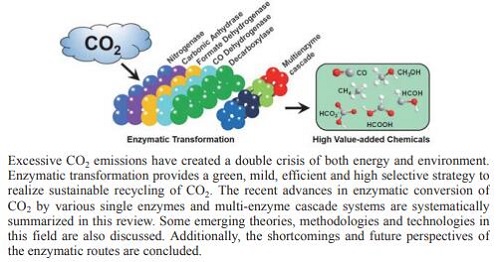
现代工业的发展不断消耗煤、石油、天然气等碳化石燃料,并产生了大量的温室气体CO2,使人类面临能源和环境的双重挑战,开发绿色能源、控制CO2对环境的影响迫在眉睫.CO2是一种廉价的碳源,可通过化学法、光化学法、电化学法或酶法等转化为高附加值含碳化学品,实现CO2的资源化循环利用,是解决全球碳排放所带来的能源和环境危机的双赢策略.受CO2胞内天然生物转化的启发,酶法为CO2的循环利用带来了新的机遇,相比于传统的化学及光、电化学法,可表现出绿色、高效、温和、高选择性等优点,有望为CO2高值化利用带来新的契机.有鉴于此,本文从胞内CO2生物转化机理出发,综述了国内外近年来多种单酶及多酶级联催化CO2高值化利用的最新研究进展,并交叉论述了固定化酶催化体系的构建、酶定向进化和改造、酶催化过程调控等内容,总结了酶法转化目前存在的缺陷和不足,并提出了展望,以期为酶法催化CO2高值化利用提供一定的参考和借鉴.
梁珊, 宗敏华, 娄文勇. 酶法催化二氧化碳制备高附加值化学品研究进展[J]. 化学学报, 2019, 77(11): 1099-1114.
Liang Shan, Zong Minhua, Lou Wenyong. Recent Advances in Enzymatic Catalysis for Preparation of High Value-Added Chemicals from Carbon Dioxide[J]. Acta Chimica Sinica, 2019, 77(11): 1099-1114.

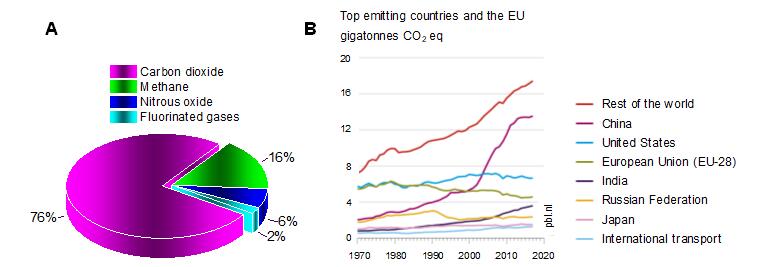
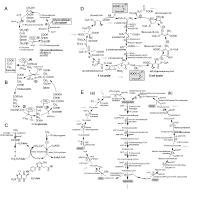

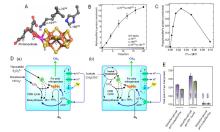

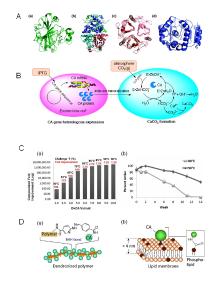

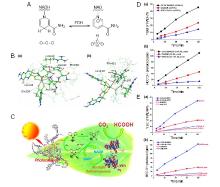

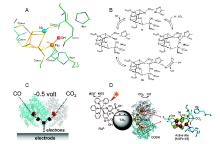

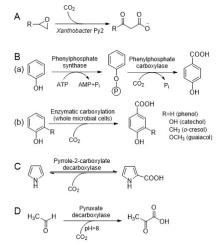


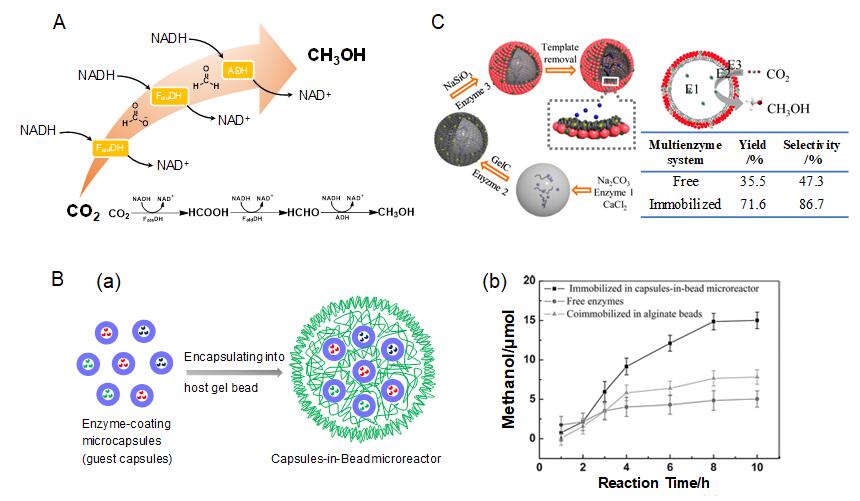
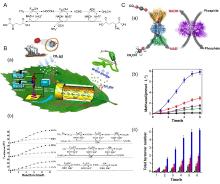

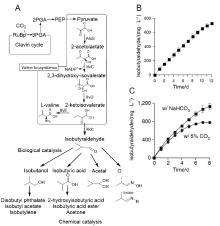

| [1] | Air Products and Chemicals, Inc., Carbon Dioxide Product Stewardship Summary, www.airproducts.com, 2018. |
| [2] |
Lei Z.; Xue Y.; Chen W.; Qiu W.; Zhang Y.; Horike S.; Tang L. Adv. Energy Mater. 2018, 8, 1801587.
doi: 10.1002/aenm.201801587 |
| [3] |
Zhang Z.; Muschiol J.; Huang Y.; Sigurdardóttir S. B.; von Solms N.; Daugaard A. E.; Wei J.; Luo J.; Xu B.-H.; Zhang S.; Pinelo M. Green Chem. 2018, 20, 4339.
doi: 10.1039/C8GC02230E |
| [4] |
Sultana S.; Chandra Sahoo P.; Martha S.; Parida K. RSC Adv. 2016, 6, 44170.
doi: 10.1039/C6RA05472B |
| [5] |
Chang S.-L.; Liang F.; Yao Y.-C.; Ma W.-H.; Yang B.; Dai Y.-N. Acta Chim. Sinica 2018, 76, 515.
doi: 10.11862/CJIC.2018.038 |
|
常 世磊; 梁 风; 姚 耀春; 马 文会; 杨 斌; 戴 永年 化学学报 2018, 76, 515.
doi: 10.11862/CJIC.2018.038 |
|
| [6] | Olivier J. G. J.; Peters J. A. H. W. Trends in global CO2 and total greenhouse gas emissions:2018 Report, PBL Netherlands Environmental Assessment Agency, The Hague 2018, 3125, pp. 4 6 |
| [7] |
Shi J.; Jiang Y.; Jiang Z.; Wang X.; Wang X.; Zhang S.; Han P.; Yang C. Chem. Soc. Rev. 2015, 44, 5981.
doi: 10.1039/C5CS00182J |
| [8] |
Zhang S.; Li X.-D.; He L.-N. Acta Chim. Sinica 2016, 74, 17
doi: 10.6023/A15090631 |
|
张 帅; 李 雪冬; 何 良年 化学学报 2016, 74, 17
doi: 10.6023/A15090631 |
|
| [9] |
Long N.; Lee J.; Koo K.-K.; Luis P.; Lee M. Energies 2017, 10, 473.
doi: 10.3390/en10040473 |
| [10] |
Chang X.; Wang T.; Yang P.; Zhang G.; Gong J. Adv. Mater. 2018, 31, 1804710
doi: 10.1002/adma.v31.31 |
| [11] |
Chen Z.; Wang X.; Liu L. Chem. Rec. 2019, 19, 1272.
doi: 10.1002/tcr.201800100 |
| [12] |
Kuramochi Y.; Ishitani O.; Ishida H. Coord. Chem. Rev. 2018, 373, 333.
doi: 10.1016/j.ccr.2017.11.023 |
| [13] | Aresta, M.; Dibenedetto, A.; Quaranta, E. In Reaction Mechanisms in Carbon Dioxide Conversion, Vol. 9, Eds.: Aresta, M.; Dibenedetto, A.; Quaranta, E., Springer Berlin Heidelberg, Berlin, Heidelberg, 2016, pp. 347~371. |
| [14] |
Mondal B.; Song J.; Neese F.; Ye S. Curr. Opin. Chem. Biol. 2015, 25, 103.
doi: 10.1016/j.cbpa.2014.12.022 |
| [15] |
Aresta M.; Quaranta E.; Liberio R.; Dileo C.; Tommasi I. Tetrahedron 1998, 54, 8841.
doi: 10.1016/S0040-4020(98)00475-X |
| [16] |
Obert R.; Dave B. C. J. Am. Chem. Soc. 1999, 121, 12192.
doi: 10.1021/ja991899r |
| [17] |
Marpani F.; Pinelo M.; Meyer A. S. Biochem. Eng. J. 2017, 127, 217.
doi: 10.1016/j.bej.2017.08.011 |
| [18] |
Fuchs G. Annu. Rev. Microbiol. 2011, 65, 631.
doi: 10.1146/annurev-micro-090110-102801 |
| [19] | Berg, I. A.; Kockelkorn, D.; Ramos-Vera, W. H.; Say, R.; Zarzycki, J.; Fuchs, G. In Carbon Dioxide as Chemical Feedstock, Vol. 3, Ed.: Aresta, M., WILEY-VCH Verlag GmbH & Co. KGaA, Weinheim, 2010, pp. 33~53. |
| [20] |
Alissandratos A.; Easton C. J. Beilstein J. Org. Chem. 2015, 11, 2370.
doi: 10.3762/bjoc.11.259 |
| [21] |
Erb T. J. Appl. Environ. Microbiol. 2011, 77, 8466.
doi: 10.1128/AEM.05702-11 |
| [22] |
Tabita F. R.; Hanson T. E.; Li H.; Satagopan S.; Singh J.; Chan S. Microbiol. Mol. Biol. Rev. 2007, 71, 576.
doi: 10.1128/MMBR.00015-07 |
| [23] |
Ljungdahl L. G.; Wood H. G. Annu. Rev. Microbiol. 1969, 23, 515.
doi: 10.1146/annurev.mi.23.100169.002503 |
| [24] | Ragsdale, S. W.; Kumar, M.; Seravalli, J.; Qiu, D.; Spiro, T. D. In Microbial Growth on C1 Compounds, Eds.: Lidstrom, M. E.; Tabita, F. R., Springer, Dordrecht, 1996, pp. 191~196. |
| [25] |
Ragsdale S. W.; Pierce E. Biochim. Biophys. Acta 2008, 1784, 1873.
doi: 10.1016/j.bbapap.2008.08.012 |
| [26] |
Gencic S.; Duin E. C.; Grahame D. A. J. Biol. Chem. 2010, 285, 15450.
doi: 10.1074/jbc.M109.080994 |
| [27] | Wang H.-J.; Ni J.; Zhang Y.; Zhang L.; Xin Y.-Y. Microbiol. China 2013, 40, 304 |
| 王 洪杰; 倪 俊; 张 怡; 张 玲; 辛 越勇 微生物学报 2013, 40, 304 | |
| [28] |
Scherf U.; Buckel W. Eur. J. Biochem. 1993, 215, 421.
doi: 10.1111/j.1432-1033.1993.tb18049.x |
| [29] |
Berg I. A.; Kockelkorn D.; Buckel W.; Fuchs G. Science 2007, 318, 1782.
doi: 10.1126/science.1149976 |
| [30] |
Ishii M.; Miyake T.; Satoh T.; Sugiyama H.; Oshima Y.; Kodama T.; Igarashi Y. Arch. Microbiol. 1996, 166, 368.
doi: 10.1007/BF01682981 |
| [31] |
Zarzycki J.; Brecht V.; Müller M.; Fuchs G. Proc. Natl. Acad. Sci. U. S. A. 2009, 106, 21317.
doi: 10.1073/pnas.0908356106 |
| [32] |
Patel H. M.; Kraszewski J. L.; Mukhopadhyay B. J. Bacteriol. 2004, 186, 5129.
doi: 10.1128/JB.186.15.5129-5137.2004 |
| [33] |
Burgess B. K.; Lowe D. J. Chem. Rev. 1996, 96, 2983.
doi: 10.1021/cr950055x |
| [34] |
Shah V. K.; Brill W. J. Proc. Natl. Acad. Sci. U. S.A. 1977, 74, 3249.
doi: 10.1073/pnas.74.8.3249 |
| [35] | Yang, Z.-Y.; Danyal, K.; Seefeldt, L. C. In Nitrogen Fixation. Methods in Molecular Biology (Methods and Protocols), Vol. 766, Ed.: Ribbe, M. W., Humana Press, Heidelberg, 2011, pp. 9~29. |
| [36] | Rivera-Ortiz J. M.; Burris R. H. J. Bacteriol. 1975, 123, 537 |
| [37] |
Lee C. C.; Hu Y.; Ribbe M. W. Science 2010, 329, 642.
doi: 10.1126/science.1191455 |
| [38] |
Hu Y.; Lee C. C.; Ribbe M. W. Science 2011, 333, 753.
doi: 10.1126/science.1206883 |
| [39] |
Yang Z.-Y.; Moure V. R.; Dean D. R.; Seefeldt L. C. Proc. Natl. Acad. Sci. U. S. A. 2012, 109, 19644.
doi: 10.1073/pnas.1213159109 |
| [40] |
Seefeldt L. C.; Rasche M. E.; Ensign S. A. Biochemistry 1995, 34, 5382.
doi: 10.1021/bi00016a009 |
| [41] |
Zheng Y.; Harris D. F.; Yu Z.; Fu Y.; Poudel S.; Ledbetter R. N.; Fixen K. R.; Yang Z.-Y.; Boyd E. S.; Lidstrom M. E.; Seefeldt L. C.; Harwood C. S. Nat. Microbiol. 2018, 3, 281.
doi: 10.1038/s41564-017-0091-5 |
| [42] |
Rebelein J. G.; Stiebritz M. T.; Lee C. C.; Hu Y. Nat. Chem. Biol. 2016, 13, 147
doi: 10.1038/nchembio.2245 |
| [43] |
Khadka N.; Dean D. R.; Smith D.; Hoffman B. M.; Raugei S.; Seefeldt L. C. Inorg. Chem. 2016, 55, 8321.
doi: 10.1021/acs.inorgchem.6b00388 |
| [44] | Lindskog S. Inorg. Chim. Acta 1983, 79, 36 |
| [45] |
Savile C. K.; Lalonde J. J. Curr. Opin. Biotechnol. 2011, 22, 818.
doi: 10.1016/j.copbio.2011.06.006 |
| [46] |
Smith K. S.; Jakubzick C.; Whittam T. S.; Ferry J. G. Proc. Natl. Acad. Sci. U. S. A. 1999, 96, 15184.
doi: 10.1073/pnas.96.26.15184 |
| [47] | Cai L.-X.; Chu Y.-M.; Zhang G.-Y. Chin. J. Biotech. 2019, 31, 1 |
| 蔡 丽希; 楚 云猛; 张 光亚 生物工程学报 2019, 31, 1 | |
| [48] |
Lehtonen J.; Shen B.; Vihinen M.; Casini A.; Scozzafava A.; Supuran C.; Parkkila A.-K.; Saarnio J.; Kivel A. J.; Waheed A.; Sly W.; Parkkila S. J. Biol. Chem. 2004, 279, 2719.
doi: 10.1074/jbc.M308984200 |
| [49] |
Loferer M. J.; Tautermann C. S.; Loeffler H. H.; Liedl K. R. J. Am. Chem. Soc. 2003, 125, 8921.
doi: 10.1021/ja035072f |
| [50] |
Shekh A.; Kannan K.; Mudliar N. S.; Yadav R.; Fulke A.; Sivanesan S. d.; Chakrabarti T. Crit. Rev. Environ. Sci. Technol. 2011, 42, 1419
doi: 10.1080/10643389.2011.556884 |
| [51] |
Bond G. M.; Stringer J.; Brandvold D. K.; Simsek F. A.; Medina M.-G.; Egeland G. Energy Fuels 2001, 15, 309.
doi: 10.1021/ef000246p |
| [52] |
Yadav R. R.; Krishnamurthi K.; Mudliar S. N.; Devi S. S.; Naoghare P. K.; Bafana A.; Chakrabarti T. J. Basic Microbiol. 2014, 54, 472.
doi: 10.1002/jobm.201300849 |
| [53] |
Mirjafari P.; Asghari K.; Mahinpey N. Ind. Eng. Chem. Res. 2007, 46, 921.
doi: 10.1021/ie060287u |
| [54] |
Xiao L.; Lian B. Carbonates Evaporites 2016, 31, 39.
doi: 10.1007/s13146-015-0239-4 |
| [55] |
McQ Gould S.; Tawfik D. Biochemistry 2005, 44, 5444.
doi: 10.1021/bi0475471 |
| [56] |
Alvizo O.; Nguyen L. J.; Savile C. K.; Bresson J. A.; Lakhapatri S. L.; Solis E. O. P.; Fox R. J.; Broering J. M.; Benoit M. R.; Zimmerman S. A.; Novick S. J.; Liang J.; Lalonde J. J. Proc. Natl. Acad. Sci. U. S. A. 2014, 111, 16436.
doi: 10.1073/pnas.1411461111 |
| [57] |
Yoshimoto M.; Walde P. World J. Microbiol. Biotechnol. 2018, 34, 151.
doi: 10.1007/s11274-018-2536-2 |
| [58] | Liu W.-F.; Wei L.-N. J. Mol. Catal. 2016, 30, 182 |
| 刘 文芳; 魏 利娜 分子催化 2016, 30, 182 | |
| [59] |
Yoshimoto M.; Schweizer T.; Rathlef M.; Pleij T.; Walde P. ACS Omega 2018, 3, 10391.
doi: 10.1021/acsomega.8b01517 |
| [60] |
Maeshima K.; Yoshimoto M. Enzyme Microb. Technol. 2017, 105, 9.
doi: 10.1016/j.enzmictec.2017.06.002 |
| [61] |
Cui J.-D.; Li Y.; Ji X.-Y.; Bian H.-J.; Zhang Y.-F.; Su Z.-G.; Ma G.-H.; Zhang S.-P. Chem. J. Chin. Univ. 2014, 35, 1999.
doi: 10.7503/cjcu20140059 |
|
崔 建东; 李 莹; 姬 晓元; 边 红杰; 张 羽飞; 苏 志国; 马 光辉; 张 松平 高等学校化学学报 2014, 35, 1999.
doi: 10.7503/cjcu20140059 |
|
| [62] |
Bulushev D. A.; Ross J. R. H. ChemSusChem 2018, 11, 821.
doi: 10.1002/cssc.201702075 |
| [63] |
Kawanami H.; Himeda Y.; Laurenczy G. Adv. Inorg. Chem. 2017, 70, 395.
doi: 10.1016/bs.adioch.2017.04.002 |
| [64] |
Castillo R.; Oliva M.; Martí S.; Moliner V. J. Phys. Chem. B 2008, 112, 10012.
doi: 10.1021/jp8025896 |
| [65] |
Neuhauser W.; Steininger M.; Haltrich D.; Kulbe K. D.; Nidetzky B. Biotechnol. Bioeng. 1998, 60, 277.
doi: 10.1002/(SICI)1097-0290(19981105)60:3<277::AID-BIT2>3.0.CO;2-E |
| [66] |
Dong G.; Ryde U. J. Biol. Inorg. Chem. 2018, 23, 1243.
doi: 10.1007/s00775-018-1608-y |
| [67] |
Boyington J. C.; Gladyshev V. N.; Khangulov S. V.; Stadtman T. C.; Sun P. D. Science 1997, 275, 1305.
doi: 10.1126/science.275.5304.1305 |
| [68] |
Schrapers P.; Hartmann T.; Kositzki R.; Dau H.; Reschke S.; Schulzke C.; Leimkühler S.; Haumann M. Inorg. Chem. 2015, 54, 3260.
doi: 10.1021/ic502880y |
| [69] |
Mota C. S.; Rivas M. G.; Brondino C. D.; Moura I.; Moura J. J. G.; González P. J.; Cerqueira N. M. F. S. A. J. Biol. Inorg. Chem. 2011, 16, 1255.
doi: 10.1007/s00775-011-0813-8 |
| [70] |
Dobbek H. Coord. Chem. Rev. 2011, 255, 1104.
doi: 10.1016/j.ccr.2010.11.017 |
| [71] |
Parkinson B. A.; Weaver P. F. Nature 1984, 309, 148.
doi: 10.1038/309148a0 |
| [72] |
Lu Y.; Jiang Z.-Y.; Xu S.-W.; Wu H. Catal. Today 2006, 115, 263.
doi: 10.1016/j.cattod.2006.02.056 |
| [73] |
Yadav R. K.; Baeg J.-O.; Oh G. H.; Park N.-J.; Kong K.-j.; Kim J.; Hwang D. W.; Biswas S. K. J. Am. Chem. Soc. 2012, 134, 11455.
doi: 10.1021/ja3009902 |
| [74] |
Choe H.; Joo J. C.; Cho D. H.; Kim M. H.; Lee S. H.; Jung K. D.; Kim Y. H. PLoS One 2014, 9, e103111.
doi: 10.1371/journal.pone.0103111 |
| [75] |
Yadav R. K.; Baeg J.-O.; Kumar A.; Kong K.-j.; Oh G. H.; Park N.-J. J. Mater. Chem. A 2014, 2, 5068.
doi: 10.1039/c3ta14442a |
| [76] |
Woolerton T. W.; Sheard S.; Reisner E.; Pierce E.; Ragsdale S. W.; Armstrong F. A. J. Am. Chem. Soc. 2010, 132, 2132.
doi: 10.1021/ja910091z |
| [77] |
Xu C.-Y.; Lin J.-Y.; Pan F.-Q.; Den B.-W.; Wang Z.-H.; Zhou J.-H.; Chen Y.; Ma J.-C.; Gu Z.-E.; Zhang Y.-W. Acta Chim. Sinica 2017, 75, 699.
doi: 10.11862/CJIC.2017.051 |
|
许 辰宇; 林 伽毅; 潘 富强; 邓 博文; 王 智化; 周 俊虎; 陈 云; 马 京程; 顾 志恩; 张 彦威 化学学报 2017, 75, 699.
doi: 10.11862/CJIC.2017.051 |
|
| [78] | Jeoung, J.-H.; Martins, B. M.; Dobbek, H. In Metalloproteins: Methods and Protocols, Vol. 3, Ed.: Hu, Y., Springer, New York, 2019, pp. 37~54. |
| [79] |
Appel A. M.; Bercaw J. E.; Bocarsly A. B.; Dobbek H.; DuBois D. L.; Dupuis M.; Ferry J. G.; Fujita E.; Hille R.; Kenis P. J. A.; Kerfeld C. A.; Morris R. H.; Peden C. H. F.; Portis A. R.; Ragsdale S. W.; Rauchfuss T. B.; Reek J. N. H.; Seefeldt L. C.; Thauer R. K.; Waldrop G. L. Chem. Rev. 2013, 113, 6621.
doi: 10.1021/cr300463y |
| [80] |
Parkin A.; Seravalli J.; Vincent K. A.; Ragsdale S. W.; Armstrong F. A. J. Am. Chem. Soc. 2007, 129, 10328.
doi: 10.1021/ja073643o |
| [81] |
Jeoung J.-H.; Dobbek H. Science 2007, 318, 1461.
doi: 10.1126/science.1148481 |
| [82] |
Miyazaki S.; Koga Y.; Matsumoto T.; Matsubara K. Chem. Commun. 2010, 46, 1932.
doi: 10.1039/b924716e |
| [83] |
Wu Y.-Z.; Shi J.-F.; Ding F.; Zhao J.-J.; Zou X.-Y.; Wang M.-R.; Zhang S.-H.; Tong Z.-W.; Zhang S.-P.; Jiang Z.-Y. Sci. Sin. Chim. 2017, 47, 315
doi: 10.1360/N032016-00104 |
|
伍 一洲; 石 家福; 丁 菲; 赵 晶晶; 邹 晓燕; 王 曼茹; 张 少华; 佟 振伟; 张 松平; 姜 忠义 中国科学:化学 2017, 47, 315
doi: 10.1360/N032016-00104 |
|
| [84] |
Shin W.; Lee S. H.; Shin J. W.; Lee S. P.; Kim Y. J. Am. Chem. Soc. 2003, 125, 14688.
doi: 10.1021/ja037370i |
| [85] |
Glueck S. M.; Gümüs S.; Fabian W. M. F.; Faber K. Chem. Soc. Rev. 2010, 39, 313.
doi: 10.1039/B807875K |
| [86] |
Allen J. R.; Ensign S. A. J. Bacteriol. 1996, 178, 1469.
doi: 10.1128/jb.178.5.1469-1472.1996 |
| [87] |
Boll M.; Fuchs G. Biol. Chem. 2005, 386, 989.
doi: 10.1515/BC.2005.115 |
| [88] | Huang J.; He Z.; Wiegel J. J. Bacteriol. 1999, 181, 5119 |
| [89] |
Wieser M.; Yoshida T.; Nagasawa T. J. Mol. Catal. B:Enzym. 2001, 11, 179.
doi: 10.1016/S1381-1177(00)00038-2 |
| [90] | Miyazaki M.; Shibue M.; Ogino K.; Nakamura H.; Maeda H. Chem. Commun. 2001, 18, 1800 |
| [91] |
Tong X.; El-Zahab B.; Zhao X.; Liu Y.; Wang P. Biotechnol. Bioeng. 2011, 108, 465.
doi: 10.1002/bit.22938 |
| [92] |
Liu W.-F.; Hou Y.-H.; Hou B.-X.; Zhao Z.-P. Chinese J. Chem. Eng. 2014, 22, 1328
doi: 10.1016/j.cjche.2014.09.026 |
|
刘 文芳; 侯 延慧; 侯 本象; 赵 之平 中国化学工程学报 2014, 22, 1328
doi: 10.1016/j.cjche.2014.09.026 |
|
| [93] |
Liu W.-F.; Hou B.-X.; Hou Y.-H.; Zhao Z.-P. Chinese J. Catal. 2012, 33, 730
doi: 10.3724/SP.J.1088.2012.11024 |
|
刘 文芳; 侯 本象; 侯 延慧; 赵 之平 催化学报 2012, 33, 730
doi: 10.3724/SP.J.1088.2012.11024 |
|
| [94] |
Li R.; Wang Z.; Ni P.; Zhao Y.; Li M.; Li L. Fuel 2014, 128, 180.
doi: 10.1016/j.fuel.2014.03.011 |
| [95] |
Jadhav S. G.; Vaidya P. D.; Bhanage B. M.; Joshi J. B. Chem. Eng. Res. Des. 2014, 92, 2557.
doi: 10.1016/j.cherd.2014.03.005 |
| [96] |
Goeppert A.; Czaun M.; Jones J.-P.; Surya Prakash G. K.; Olah G. A. Chem. Soc. Rev. 2014, 43, 7995.
doi: 10.1039/C4CS00122B |
| [97] |
Wang W.-H.; Himeda Y.; Muckerman J. T.; Manbeck G. F.; Fujita E. Chem. Rev. 2015, 115, 12936.
doi: 10.1021/acs.chemrev.5b00197 |
| [98] |
Kuwabata S.; Tsuda R.; Yoneyama H. J. Am. Chem. Soc. 1994, 116, 5437.
doi: 10.1021/ja00091a056 |
| [99] |
Baskaya F. S.; Zhao X.; Flickinger M. C.; Wang P. Appl. Biochem. Biotechnol. 2010, 162, 391.
doi: 10.1007/s12010-009-8758-x |
| [100] |
Xu S.-W.; Lu Y.; Li J.; Jiang Z.-Y.; Wu H. Ind. Eng. Chem. Res. 2006, 45, 4567.
doi: 10.1021/ie051407l |
| [101] |
Sun Q.; Jiang Y.; Jiang Z.; Zhang L.; Sun X.; Li J. Ind. Eng. Chem. Res. 2009, 48, 4210.
doi: 10.1021/ie801931j |
| [102] |
Jiang Y.; Sun Q.; Zhang L.; Jiang Z. J. Mater. Chem. 2009, 19, 9068.
doi: 10.1039/b914268a |
| [103] |
Wang X.; Li Z.; Shi J.; Wu H.; Jiang Z.; Zhang W.; Song X.; Ai Q. ACS Catal. 2014, 4, 962.
doi: 10.1021/cs401096c |
| [104] |
Aresta M.; Dibenedetto A.; Baran T.; Angelini A.; Labuz P.; Macyk W. Beilstein J. Org. Chem. 2014, 10, 2556.
doi: 10.3762/bjoc.10.267 |
| [105] |
El-Zahab B.; Donnelly D.; Wang P. Biotechnol. Bioeng. 2008, 99, 508.
doi: 10.1002/bit.21584 |
| [106] |
Ji X.; Su Z.; Wang P.; Ma G.; Zhang S. ACS Nano 2015, 9, 4600.
doi: 10.1021/acsnano.5b01278 |
| [107] |
Singh R. K.; Singh R.; Sivakumar D.; Kondaveeti S.; Kim T.; Li J.; Sung B. H.; Cho B.-K.; Kim D. R.; Kim S. C.; Kalia V. C.; Zhang Y.-H. P. J.; Zhao H.; Kang Y. C.; Lee J.-K. ACS Catal. 2018, 8, 11085.
doi: 10.1021/acscatal.8b02646 |
| [108] |
Calvin M.; Massini P. Experientia 1952, 8, 445.
doi: 10.1007/BF02139287 |
| [109] |
Wendell D.; Todd J.; Montemagno C. Nano Lett. 2010, 10, 3231.
doi: 10.1021/nl100550k |
| [110] |
Atsumi S.; Higashide W.; Liao J. C. Nat. Biotechnol. 2009, 27, 1177.
doi: 10.1038/nbt.1586 |
| [111] |
Wang W.; Yan Z.-J.; Yuan Y.; Sun F.-X.; Zhao M.; Ren H.; Zhu G.-S. Acta Chim. Sinica 2014, 72, 557
doi: 10.6023/A14020121 |
|
王 维; 闫 卓君; 元 野; 孙 福兴; 赵 明; 任 浩; 朱 广山 化学学报 2014, 72, 557
doi: 10.6023/A14020121 |
|
| [112] |
Jia J.-T.; Wang L.; Zhao Q.; Sun F.-X.; Zhu G.-S. Acta Chim. Sinica 2013, 71, 1492
doi: 10.6023/A13070702 |
|
贾 江涛; 王 蕾; 赵 晴; 孙 福兴; 朱 广山 化学学报 2013, 71, 1492
doi: 10.6023/A13070702 |
| [1] | 何文, 王波, 冯晗俊, 孔祥如, 李桃, 肖睿. CO2捕集膜分离的Pebax基材料研究进展[J]. 化学学报, 2024, 82(2): 226-241. |
| [2] | 李萍, 杨琪玉, 曾婧, 张然, 陈秋燕, 闫飞. 氟掺杂对可逆固体氧化物电池性能的影响及相关动力学研究[J]. 化学学报, 2024, 82(1): 36-45. |
| [3] | 林航青, 马若茹, 江怡蓝, 许木榕, 林洋彭, 杜克钊. 用于卤素捕获的材料研究进展[J]. 化学学报, 2024, 82(1): 62-74. |
| [4] | 吴宇晗, 张栋栋, 尹宏宇, 陈正男, 赵文, 匙玉华. “双碳”目标下Janus In2S2X光催化还原CO2的密度泛函理论研究[J]. 化学学报, 2023, 81(9): 1148-1156. |
| [5] | 杨宇洁, 巩宇锈, 顾天航, 张伟贤. 冷冻电子显微镜技术进展及环境研究应用★[J]. 化学学报, 2023, 81(8): 990-1001. |
| [6] | 崔国庆, 胡溢玚, 娄颖洁, 周明霞, 李宇明, 王雅君, 姜桂元, 徐春明. CO2加氢制醇类催化剂的设计制备及性能研究进展[J]. 化学学报, 2023, 81(8): 1081-1100. |
| [7] | 田茹心, 杨苗, 陈果, 刘豇汕, 袁梦梅, 原弘, 欧阳述昕, 张铁锐. 钌/石英滤纸: 可回收型CO2甲烷化光热催化膜★[J]. 化学学报, 2023, 81(8): 869-873. |
| [8] | 侯威, 么艳彩, 张礼知. 电化学还原去除水中含氧酸根离子研究进展★[J]. 化学学报, 2023, 81(8): 979-989. |
| [9] | 刘建川, 李翠艳, 刘耀祖, 王钰杰, 方千荣. 高稳定二维联咔唑sp2碳共轭共价有机框架材料用于高效电催化氧还原★[J]. 化学学报, 2023, 81(8): 884-890. |
| [10] | 刘佳, 陈光海, 陈轶群, 江杰涛, 肖霄, 吴强, 杨立军, 王喜章, 胡征. 碳热还原活化扩孔提升介观结构碳纳米笼超级电容器性能★[J]. 化学学报, 2023, 81(7): 709-716. |
| [11] | 曾少娟, 孙雪琦, 白银鸽, 白璐, 郑爽, 张香平, 张锁江. CO2捕集分离的功能离子液体及材料研究进展★[J]. 化学学报, 2023, 81(6): 627-645. |
| [12] | 黄家翩, 刘飞, 吴劼. 二氟环丙烯参与的有机反应研究进展★[J]. 化学学报, 2023, 81(5): 520-532. |
| [13] | 刘健, 欧金花, 李泽平, 蒋婧怡, 梁荣涛, 张文杰, 刘开建, 韩瑜. 金属-有机骨架衍生的Co单原子高效催化硝基芳烃氢化还原[J]. 化学学报, 2023, 81(12): 1701-1707. |
| [14] | 刘金晶, 杨娜, 李莉, 魏子栋. 铂活性位空间结构调控氧还原机理的理论研究★[J]. 化学学报, 2023, 81(11): 1478-1485. |
| [15] | 孟庆端, 韩佳宏, 潘一骁, 郝伟, 范青华. C1-对称手性氮杂环卡宾(NHC)配体的不对称合成及其催化性能研究★[J]. 化学学报, 2023, 81(10): 1271-1279. |
| 阅读次数 | ||||||
|
全文 |
|
|||||
|
摘要 |
|
|||||